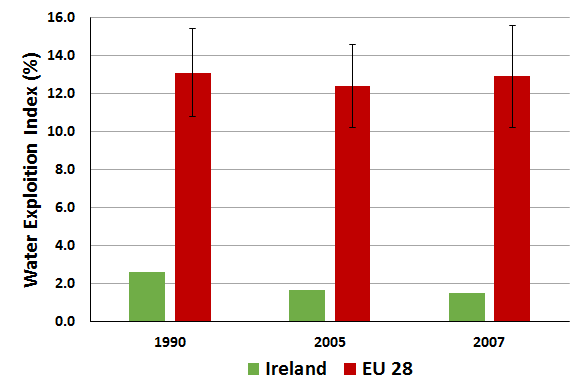| Current status | 2007 |  |
| Short term status | 2005 - 2007 |  |
| Long term status | 1990 - 2007 |  |
Click on the charts below in order to see the full resolution versions.
This indicator can identify whether the rates of abstractions in countries are sustainable over the long term. Although no legal targets are defined, the implementation of the Water Framework Directive will have an important impact. One of its objectives is to promote sustainable use based on a long-term protection of available water resources. Also, one of the environmental objectives of the same directive is to ensure a balance between abstraction and recharge of groundwater, with the aim to achieve good groundwater status.
The water exploitation index (WEI), or withdrawal ratio, in a country is defined as the mean annual total abstraction of fresh water divided by the long-term average freshwater resources. It describes how the total water abstraction puts pressure on water resources. Thus it identifies those countries having high abstraction in relation to their resources and therefore are prone to suffer problems of water stress. The long-term average freshwater resource is derived from the long-term average precipitation minus the long-term average evapotranspiration plus the long-term average inflow from neighbouring countries.
According to Alcamo et al. (2000), the warning threshold can be 20%, which distinguishes a non-stressed region from a stressed one. Severe water stress can occur where the WEI exceeds 40 %, indicating unsustainable water use.
The current report on the Water Exploitation Index for Europe can be found here:
https://www.eea.europa.eu/data-and-maps/indicators/use-of-freshwater-resources-3/assessment-4
Reference:
Alcamo, J., Henrich, T., Rösch, T., 2000. World Water in 2025 – Global modelling and scenario analysis for the World Commission on Water for the 21st Century. Report A0002, Centre for Environmental System Research, University of Kassel, Germany.

